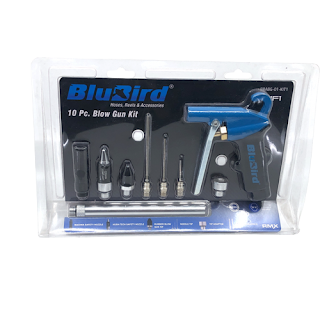What Should I Look For When Buying a Pressure-Washing Hose?
When it comes to pressure washing, choosing the appropriate equipment is key to getting the job done efficiently and effectively. Paying special attention to selecting an effective pressure washer hose can make a dramatic difference in the experience of your cleaning session.
Thus, in this blog post, we'll explore what factors you should consider when buying a pressure-washing hose to ensure you make the best choice.
So, without any further ado, let’s dive right in.
Key points to consider before buying a pressure washing hose
As with purchasing any equipment, there are a number of considerations you should keep in mind before settling on any one purchase - pressure washing hoses being no exception. So, check out this handy checklist and save it for future reference.
1. Material and durability
One of the primary aspects to consider when shopping for a pressure washer hose is its material. Doing this will enable you to assess its durability, so consider searching for PVC or reinforced rubber options, as these should provide maximum performance and endurance.
These types of materials are known for their strength, flexibility, and resistance to abrasion, chemicals, and weather conditions. A sturdy hose can withstand the high pressure generated by a pressure washer without developing leaks or bursts.
2. Hose length and diameter
Step two is to consider the length and diameter of the hose. Longer hoses provide greater reach while being more flexible - perfect for maneuvering around large areas without needing to relocate them regularly.
Diameter matters too: wider hoses provide more water per surface area and are ideal for heavy-duty cleaning tasks; however, as their diameter widens, so too does their pressure
3. Pressure rating
Always make sure to check the pressure rating of the hose. This indicates the maximum pressure the hose can handle. Also, make sure the pressure rating matches or exceeds the specifications of your pressure washer.
If you operate a pressure washer with a hose that cannot handle your intended pressure, your hose may get damaged, or worse, it can lead to serious accidents. Thus, you should consider both the maximum pressure and the working pressure of the hose to ensure it meets your specific requirements.
4. Hose connection type
You should also pay attention to the hose’s connection. Most pressure washers have either a quick-connect or threaded connection. Quick-connect fittings provide convenience and are easy to use. This allows you to attach and detach the hose quickly.
Threaded connections, on the other hand, provide a more secure and leak-free connection. Ensure that the hose you choose matches the connection type of your pressure washer to avoid any sort of compatibility issues.
5. Hose accessories
Last but on least, you should also consider any additional accessories or features that can enhance your pressure-washing experience. Some hoses come with adjustable nozzles or spray gun attachments that allow you to vary the spray pattern or control the water flow.
Swivel fittings can prevent the hose from tangling, improving maneuverability. Also, you should check if the hose you are buying is compatible with other pressure washer accessories that you have.
Final Thoughts
Selecting an effective pressure washing hose can significantly enhance your cleaning performance and experience. By considering factors like material, durability, length, diameter, pressure rating, type of connection, and accessories, you can make an informed choice.
Also, before selecting a pressure washer for your specific requirements, always ensure it prioritizes quality and sustainability.
Want the best quality pressure washer hose? You can blindly choose BluBird’s hoses which are trusted by thousands of satisfied customers. Visit https://blubirdindustries.com/ and check out more of their amazing hoses.



Comments
Post a Comment